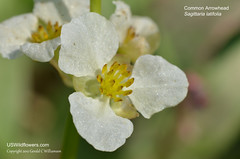I’m now, as of September 22, retired. In a couple of weeks I’ll be semi-retired, since I’ll be going back to work for my former employer on a part-time basis. I was on 3 weeks of vacation prior to the official retirement date, so I’ve had some time to reflect on what this watershed event in the lives of my wife and I means to us generally, and specifically for USWildflowers.com.
What does it mean?
- Less money – Even with the part-time work, we’ll have a lower income than when I was working full time.
- More time – I’ll be working something less that 20 hours per week in my part-time job when that starts in mid-October, so I’ll have over 20 hours extra per week to pursue other activities.
- Less stress – I determined a couple of years ago that I was not handling the stress of my job as well as when I was younger, or perhaps the stress levels had increased past the point of my tolerance. In any case, I knew something had to change relative to that stress. The reduction in that stress has been wonderful these past four weeks. I hope it is also making me less of a pain in the neck to my dear wife, since she has to put up with me for more hours each week now.
Those first two items may have an impact on USWildflowers.com.
Let’s talk about the “extra time” first. I’ve got some stuff around household that have been somewhat neglected. I’m also now spending a half day each week assisting with the homeschooling of two of my
grandsons, and with 15 grandchildren, we will definitely be spending more “grandkid time” – if only at their many sporting events. My mother lives about 2 hours away from us and I want to become more consistent in my visits with her. I’d also like to spend some time helping in community support ministries that do disaster recovery, feed the hungry, and build housing
for those that have a need for affordable housing. And while I’ve already been spending quite a bit of time on USWildflowers.com effort, I’d like to increase the production of content – new species added and additional information on species already in the database at USWildflowers.com. Each species on USWildflowers.com represents several hours (frequently many hours) of photography, research, and publishing effort.
That 20 “extra” hours is going fast…
Now the money thing – my retirement income dictates that I can no longer subsidize USWildflowers.com. While the revenue from advertising on the site is at least paying the hosting charges and domain registration fees, with 2011 being the first year it did that, 2012 has seen fewer wildflower-dedicated trips due to the increased cost of gasoline. Unless that revenue increases, or I find another way to monetize USWildflowers.com, I won’t be able to travel as much afield to photograph wildflowers, and subsequently research and publish them on USWildflowers.com.
So maybe the solution is right in front of me. In 2009 and 2010 I spent a lot of time locally “wildflowering” in Walker County. I thought the returns were diminishing, but maybe I was just wanting to go further afield. However, in two days this week at the walking track at the Chattanooga Valley Church of the Nazarene, I found and photographed 5 species that I had previously not identified! One of them, Creeping Cucumber, has already been published on USWildflowers.com. The others, Bur Cucumber, Virginia Dayflower, Common Arrowhead, and Common Smartweed, are in the pipeline and will be showing up on the website over the next few weeks. If I can continue to find wildflower sites close by, perhaps I can continue to “mine” them for new (to me) species, reducing travel time and expense at the same time.
The Lord will provide.




